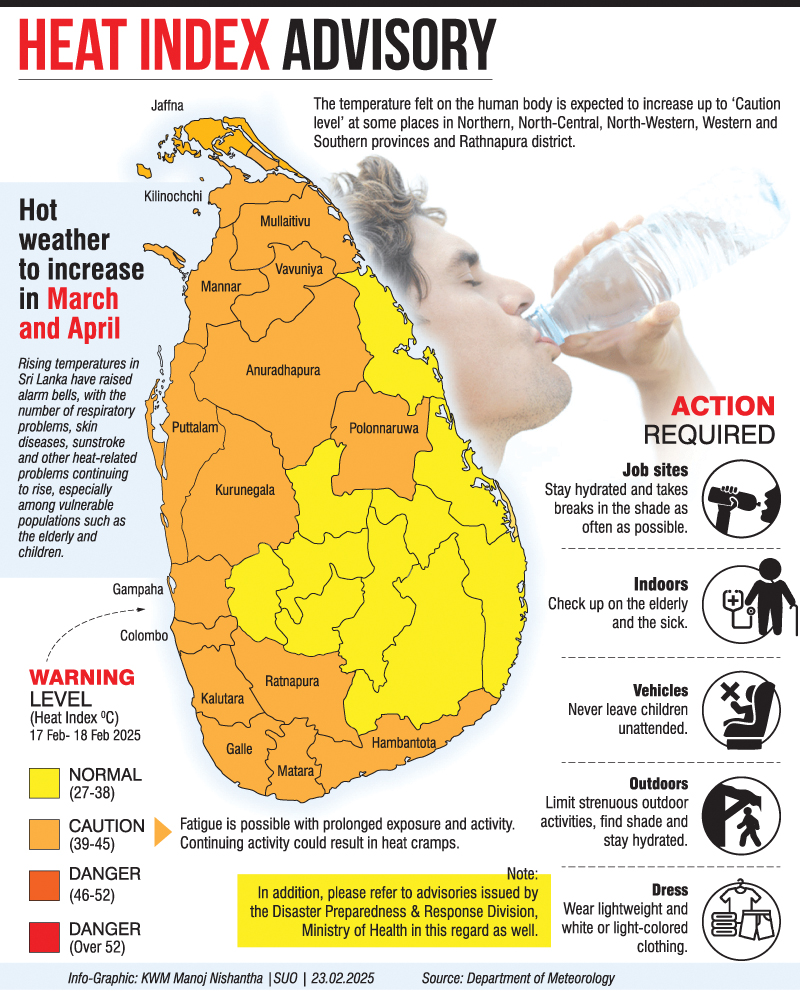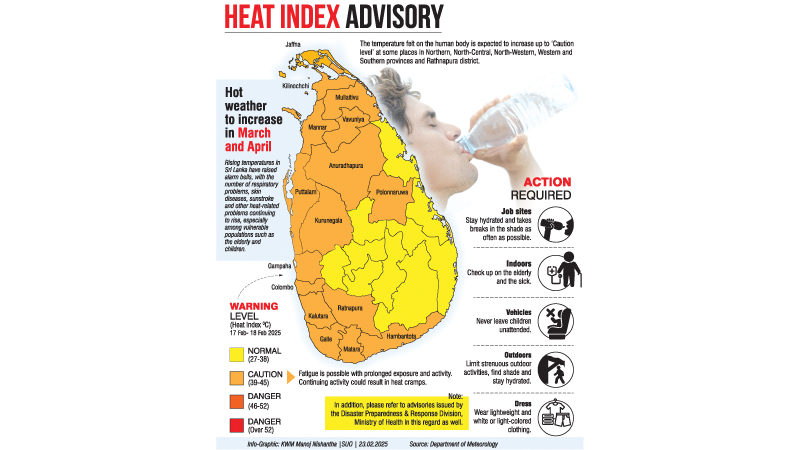 Three-year-old little Miyuru and his father Akila had a great time at the playground, despite it being one of the hottest days in the year and they’ve been playing nonstop in the scorching sun for hours. Miyuru looked exhausted, so Akila decided to head back home. He made a pit stop at the local grocery shop, and let Miyuru stay in the car.
Three-year-old little Miyuru and his father Akila had a great time at the playground, despite it being one of the hottest days in the year and they’ve been playing nonstop in the scorching sun for hours. Miyuru looked exhausted, so Akila decided to head back home. He made a pit stop at the local grocery shop, and let Miyuru stay in the car.
He rolled down the window, and even parked the car in a shade. When he returned to the car after about half an hour, he noticed that little Miyuru was vomiting uncontrollably, and was feeling very dizzy. He immediately rushed his son to the hospital, and a diagnosis of heat exhaustion was made. Miyuru had to receive resident medical treatments but fortunately made a full recovery.
Seventy-four-year old Sumanalatha has always been a strong willed, iron-hearted farmer. She has been labouring in the paddy fields with her husband for as long as she could remember. Even after the untimely demise of her husband, Sumanalatha took pride in battling with the burning sun, unforgiving skies and harsh yet fertile soils of the Hambantota district, not letting her heart condition, high blood pressure and diabetes rob her of even a day’s honest work.
On this particular evening, after a whole morning session of hard field work, Sumanalatha’s daughter found her mother very drowsy and disoriented. She had vomited profusely, and could not move the limbs in the right side of her body. At the hospital, the family was informed that Sumanalatha had suffered a severe heatstroke, and currently reached a state of multiple organ dysfunction, including a heart attack and kidney failure. Sumanalatha had to be admitted to the intensive care unit and undergo many invasive treatments.
Heat exhaustion and heatstroke
Accumulation of heat energy over a multitude of unusually hot days can give rise to a heatwave, which can have significantly detrimental effects on human health, especially in vulnerable populations such as children, the elderly and the sick. The world Health Organization (WHO), being the foremost United Nations agency dedicated to global healthcare, says that heat is an important global environmental health hazard which demonstrates an exponential rise of exposure in the recent years, owing primarily to increasing climate change phenomena.
It is further elaborated that there is an increase of 85 percent in hazardous exposure to heat, mainly in the world population above 65 years of age. It is alarmingly observed that between 2000 and 2019, a median of 489,000 heat-related deaths occurred each year, of which 45 percent of this took place in Asia.
Hazardous exposure to heat and susceptibility to its medical complications depend on a multitude of physiological (such as age and pre-existing diseases) and environmental (such as occupational and sociology-economic) factors. The extent of clinical implications can range from reversible heat exhaustion to more life-threatening heatstroke. Early identification and prompt seeking of medical care is the key to reduce mortality and arrive at a favourable outcome.
In heat-exhaustion, prolonged exposure to heat causes the internal heat dissipating mechanism in your body to overwork and malfunction. This will lead to an unacceptable rise in body temperature, where the initial symptoms would be exhaustion, lethargy, headache, muscle cramps, excessive sweating, nausea and vomiting. If not treated promptly, this may escalate to a full blown heatstroke state, which carries a heavy rate of morbidity and mortality.
In heatstroke, a complete derangement of the body’s heat-regulatory system begins to damage major organ systems, predominantly the brain and the central nervous system. The level of consciousness of the individual may alter rapidly, and neurological symptoms such as impairment of higher brain functions, confusion, combativeness and drowsiness may occur.
Uncompensated loss of water and electrolytes can aggravate alarming symptoms such as paralysis of one side of the body, seizures and coma. Heatstroke is considered as a medical emergency, and carries a high case fatality rate. Henceforth, early identification and initiation of advanced medical care is paramountly important.
How to prevent heatstroke?
Heatstroke often occurs secondary to heat waves, which are frequently forecasted by the Department of Meteorology. Special attention should be given to such warnings and measures should be taken to minimise unacceptable hazardous exposure to heat.
It is advisable to minimise travelling and engaging in strenuous activities in times of heatwaves as much as possible. In instances where this cannot be helped, frequent rest periods in shades and adequate intake of fluids to compensate for the water and salt loss should be carried out.
Children are an especially vulnerable group to heat exhaustion and heatstroke, owing to their immature internal heat-regulatory mechanism. When playing outside on unusually hot days, children must be adequately hydrated and should be dressed in loose, heat-disseminating attires. They should never be left in vehicles even under a shade with shutters rolled down since the temperature inside a vehicle can drastically rise to dangerous levels without being accurately perceived.
Special care should be taken of the elderly population too. Heat injuries can precipitate their already existing disease conditions such as high blood pressure, heart disease, diabetes, and kidney disease. Poor compensatory mechanisms and senile frailty can accelerate heatstroke-related end-organ damage, leading to heart attacks, kidney failure, coma and eventually death.
It is of paramount importance that one should be competent in basic first aid when it comes to heat-related injuries. If heatstroke or heat exhaustion is suspected, the individual should be accompanied to a shade, and excessive clothing should be removed. If conscious, he/she should be encouraged to drink copious amounts of water or Oral Rehydration Solution.
Measures can be taken to reduce core body temperature, such as sponging with wet towels or using an electric fan. Fluids must never be forced down on a person whose level of consciousness is low. Immediate initiation of medical treatment in a healthcare setting could be life-saving, as heatstroke, which is often neglected or overlooked, can cause a significant mortality and disease burden.

The writer is a medical officer in anaesthesia and intensive care medicine, and an alumnus of the University of Peradeniya.







